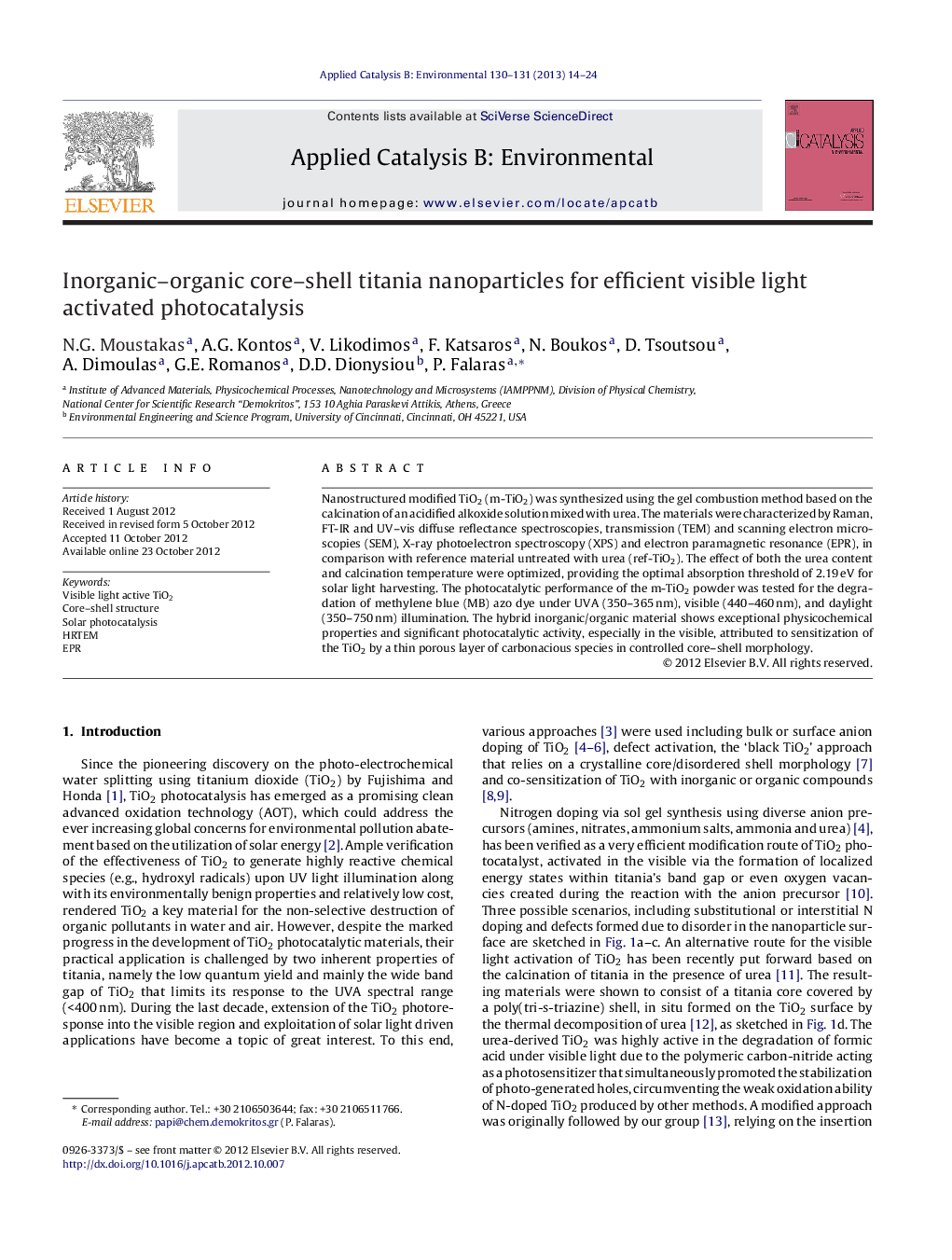| Article ID | Journal | Published Year | Pages | File Type |
|---|---|---|---|---|
| 45811 | Applied Catalysis B: Environmental | 2013 | 11 Pages |
Nanostructured modified TiO2 (m-TiO2) was synthesized using the gel combustion method based on the calcination of an acidified alkoxide solution mixed with urea. The materials were characterized by Raman, FT-IR and UV–vis diffuse reflectance spectroscopies, transmission (TEM) and scanning electron microscopies (SEM), X-ray photoelectron spectroscopy (XPS) and electron paramagnetic resonance (EPR), in comparison with reference material untreated with urea (ref-TiO2). The effect of both the urea content and calcination temperature were optimized, providing the optimal absorption threshold of 2.19 eV for solar light harvesting. The photocatalytic performance of the m-TiO2 powder was tested for the degradation of methylene blue (MB) azo dye under UVA (350–365 nm), visible (440–460 nm), and daylight (350–750 nm) illumination. The hybrid inorganic/organic material shows exceptional physicochemical properties and significant photocatalytic activity, especially in the visible, attributed to sensitization of the TiO2 by a thin porous layer of carbonacious species in controlled core–shell morphology.
Graphical abstractFigure optionsDownload full-size imageDownload as PowerPoint slideHighlights► Combustion gel synthesis of composite titania photocatalysts. ► Optimization of urea content and calcination temperature. ► Core crystalline TiO2 uniformly covered by thin porous carbonaceous shell. ► Visible light activated EPR signals from organic radicals. ► High photocatalytic performance under visible light illumination.
